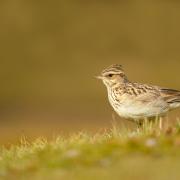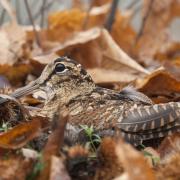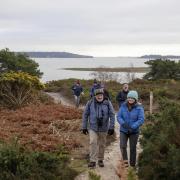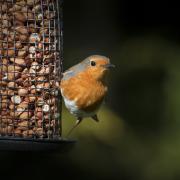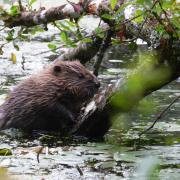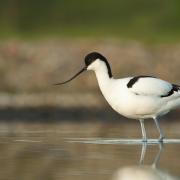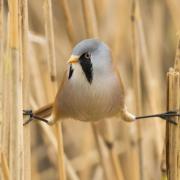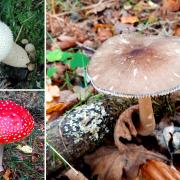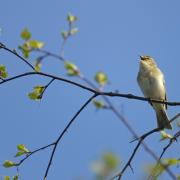As this magnificent woodland displays its rich autumn hues, wildlife photographer Colin Varndell turns his lens on its busy residents
As this magnificent woodland displays its rich autumn hues, wildlife photographer Colin Varndell turns his lens on its busy residents
Duncliffe Wood is one of Dorset's richest broad-leaved woodlands in terms of the number of species it supports, especially invertebrates. It is also one of the largest woods in north Dorset and the highest point in the Blackmore Vale. It is situated just off the A30 between Sherborne and Shaftesbury on the road towards Stour Row. This 213-acre ancient natural woodland has been owned and managed by the Woodland Trust since 1984; traditionally coppiced in the past, it is now managed to encourage a broader range of hardwood trees.
The wood comprises such tree species as field maple, wild cherry, hawthorn, oak, beech and ash, with some remaining areas of hazel coppice. Autumn is a wonderful time of year to visit Duncliffe Wood as there is so much wildlife activity set against a backdrop of rich colours.
The wild mammals which live here are typical of native broadleaved woodland habitats and include badger, wood mouse, common shrew, grey squirrel, field and bank voles and dormouse, which thrives in the hazel coppice. Roe deer may be encountered at any time of year. These secretive native deer lie up in the dense cover of the woodland during daytime and graze in the adjacent fields at dusk and dawn. The resident badgers live in underground setts in the higher parts of the wood. It is not unusual to see badgers, especially youngsters, above ground in daylight going about their business in the safety of this tranquil place.
Duncliffe Wood is an excellent location for observing woodland birds in autumn. Some of the species reliably seen here include both green and great spotted woodpecker, nuthatch, treecreeper, and a variety of tits and finches. At this time of year, bramblings may be seen amongst flocks of chaffinches feeding on the beechnuts. The flamboyant jay will give away its presence with a loud, raucous screech when it spies humans. These large birds collect acorns in the autumn. At the top of the avian food chain, sparrow hawks frequently patrol the rides, while the 'mewing' cries of buzzards can be heard overhead.
In autumn the wood exudes an enchanting ambience as the natural world lays on its final flourish of the living year, with shrubs and trees becoming dormant and replacing their summer colours with the warm hues of the season. These autumn colours can be seen in the form of trees, shrubs, leaves, berries, seedheads, ferns and, finally, leaf litter. Although the colours of deciduous trees change over a period of several weeks, the autumn hues usually peak at the end of October to the beginning of November.
As all other plant life is deteriorating, fungi start sprouting all over the wood in the shape of toadstools and brackets, providing another spectacular display as they release their life-giving spores. These strange, other-worldly life forms are the fruiting bodies of the mycelium, which are minute tubes, thinner than cobweb strands, that feed on decaying and sometimes even living organic matter, sometimes coming up literally overnight. In spite of their rather sinister connotations, some of the fungi here are very attractive and come in a bewildering array of colours.
There is a lush growth of bracken throughout the wood and during autumn the fern fronds shift from green, through yellow and orange to the withered red-brown skeletons of winter.
Woodland birds now become more noticeable as they prepare for the onset of winter, but none is more vocal than the tawny owl. This nocturnal hunter feeds on a diet made up almost entirely of small woodland mammals like wood mice and field or bank voles. Late on autumn afternoons, as the veil of dusk creeps through the wood, excited 'ke-wick' calls from young tawny owls echo through the trees. Several pairs of tawnies occupy areas in Duncliffe Wood and at this time of year they are sorting out winter territories. It is after dark that the wood really comes alive, as this is when woodland wildlife awakens to gather the autumn harvest under cover of darkness.
Of all the seasons that can be enjoyed in Duncliffe Wood, autumn is the shortest but also the most spectacular. It is as if this is nature's final offering before we are plunged into the gloom of winter.







